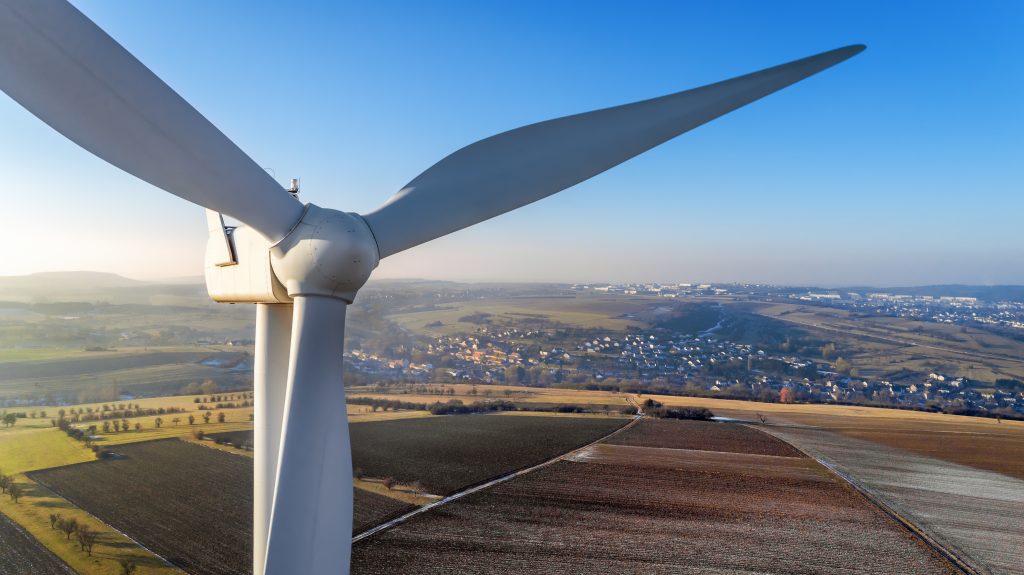by Dr Iain Staffell – Imperial College London
Britain’s wind farms had a bumper quarter, with output up 40% on this time last year.
A succession of severe winter storms battered the country, giving the wettest and windiest February since records began. This helped make February the first month on record when more electricity was produced by wind farms than gas-fired power stations across the country.
The two were neck and neck over the whole quarter: wind supplied 30.5% of Britain’s electricity, versus 30.6% from gas. This pushed the supply from all renewables to over 40% of electricity consumed, overtaking output from fossil fuels for the first time. The exceptional output was driven for a large part by extreme weather. Storm Ciara hit in early February, and was followed just days after by Storm Dennis, one of the most intense ever recorded in the UK. Together these killed eight people, left half a million without power and brought devastating flooding across Wales, the Midlands, Cumbria and Yorkshire.
The contribution of wind would have been even higher if the Western Link (which connects Scotland, Wales and England) had been functioning normally. The £1.3bn subsea cable went fully operational in December, but suffered an unplanned outage between 10th January and 8th February which impacted around 2.2 GW of wind farms, or 10% the UK’s wind capacity. Ofgem is currently investigating the performance of the cable, which should help to alleviate constraints that force Scottish wind farms to turn off when their output cannot be transported down to the rest of the country.
Britain’s wind farms ran at all-time high capacity factors, in February averaging 50% for onshore and 60% for offshore wind farms. This was significantly higher than fossil-fuelled power stations (34% for gas and just 17% for coal), and higher even than the country’s nuclear reactor fleet (59%).
Looking ahead, wind generation records will continue being broken as two major offshore wind farms are due to come online later this year. Hornsea One (1,218 MW) and East Anglia One (714 MW) will both dwarf the world’s largest operating wind farm (Walney Extension, also in the UK). Together they will power over 1.5 million homes, and bring the UK’s total offshore wind capacity to over 10 GW – the largest fleet in the world.
The share of electricity supplied by renewables and fossil fuels each quarter over the past decade
